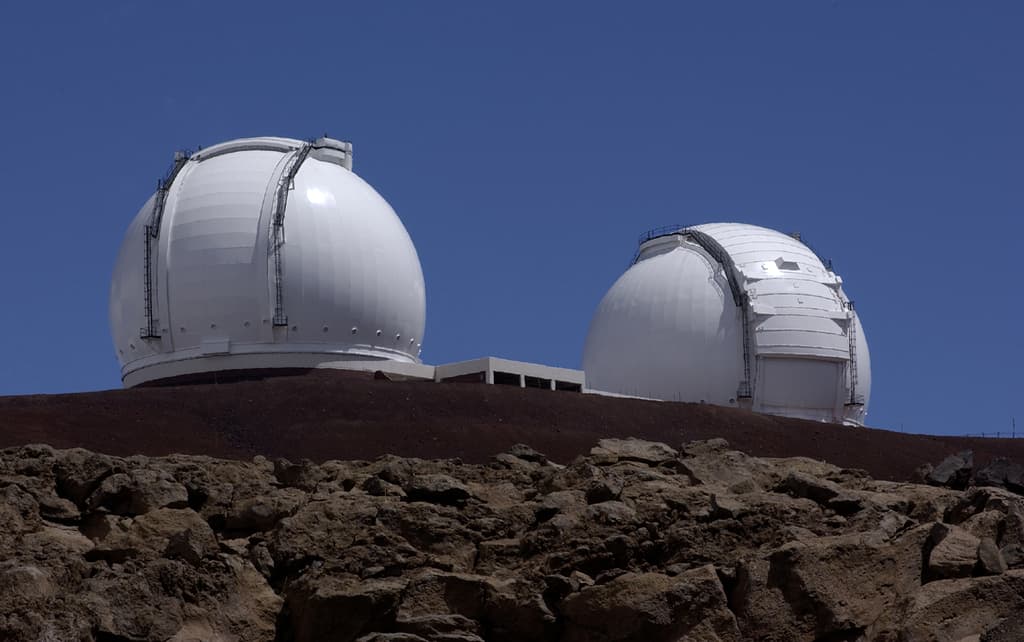Tonight, January 24th, a new star will light up the Hawaiian sky: Orbiting Configurable Artificial Star (ORCAS), an artificial star that will allow humanity, in the future, to build observatories with the quality of space telescopes like Hubble and James Webb – but here on the ground. ORCAS is led by Israeli Dr. Eliad Peretz, who works at NASA as chief mission and instrument scientist in the Solar Research Division at the Goddard Center.
"We launch telescopes into space because there are atmospheric disturbances," explains Dr. Peretz. "To get sharp images like Hubble or Webb, you have to go outside the atmosphere. But space telescopes have huge limitations: they cost a lot of money, you have to use specific materials that are suitable for the space environment, they are difficult to repair in space, and most importantly – you can't build as large telescopes as we would like, because there is no launcher to carry them into orbit. We are nearing the limit of our launch capability. It is simply impossible to launch a space telescope with a mirror with a diameter of 15 or 20 meters. But here on Earth today we are building telescopes of those diameters, like the Extremely Large Telescope, or ELT for short. In the next 50 years, we won't see anything of that size in space. So the challenge is to improve the quality of our telescopes on the ground, so that it comes close to the quality of our telescopes in space."
In recent years, on-earth observatories have used adaptive optics (AOs) to eliminate or reduce atmospheric interference. There are two ways to do so – using a star or using a laser beam – but the idea is similar: if we know what the light source should look like, but on the ground we measure other light, we can reconstruct the passage of light in the atmosphere and correct the distortion in real time.
"The use of stars is effective," says Dr. Peretz, "but in order to make corrections in the field of visible light, you need to find really bright stars – with an observable brightness of minus five or more. [In visible light, the scale is reversed: the higher the value on the scale, the lower the brightness – Ed.]. 99% of stars are not as bright, so most of the sky is not available for use in this technique. For this reason, the second technique is more often used: fire a laser with a wavelength of 589 nanometers and get an 'artificial star'. But the laser doesn't cross the entire atmosphere, and it doesn't look like a star. is a laser beam with the dimensions of a laser beam. Ask any amateur astronomer if they prefer to use a star or a laser pointer to find a distant galaxy. The answer is obvious: a star."
The ORCAS experiment, therefore, is designed to change the rules of the game.
$75 million that could save tens of billions.
The experiment will begin tonight when the Lase rCommunications Relay Demonstration (LCRD) research satellite, launched into space in 2021, fires two advanced lasers at the giant telescopes at the Keck Observatory, near the summit of Mauna Kea Mountain in Hawaii. This is the first time in history that space lasers will have detected telescopes on the ground.
"Of course, we control the power of the laser," says Dr. Peretz. The star that will shine here tonight is a star with an apparent brightness of minus seven – almost as bright as the moon. As such, the telescopes on the ground will be able to correct the atmospheric distortions according to the distortions to our artificial star. And our mission also has a scientific angle. When we characterize stars—mass, radius, temperature, atmosphere, the 'habitable zone', literally everything we can say about stars—we are actually measuring their light, translating that apparent brightness into absolute brightness. But we have never really launched anything into space and tested that we can convert visible brightness into absolute clarity. This is a historical experiment of astronomical importance, and I am proud to say that it will be led by an Israeli researcher: Keshet Shavit from Ben-Gurion University, who came to us from Kibbutz Be'eri as an international researcher for NASA."
If the experiment is successful tomorrow and in the next measurements in two months, Dr. Peretz is convinced that the technology will revolutionize the way humanity views the sky.
"To give an order of magnitude, James Webb, six and a half meters in diameter, cost $12 billion. The next space telescope will be nine meters in diameter and will cost between $18 billion and $27 billion. Four months ago, we demonstrated with a natural star, and then with a bright asteroid, that is, a moving object, that it was possible to improve the performance of the Keck telescope and compare it to the performance of a space telescope with a diameter of nine meters. Now we are in the third and final stage of the feasibility study – projecting from above to below, from space to Earth, in the hope of making the technology available to all researchers, continuously, all at a cost of $75 million. That's a tiny fraction of the price of a space telescope."











